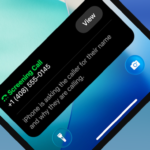The debt collection industry has long relied on phone calls as a primary communication method to reach customers and negotiate payments. However, advancements in mobile technology, particularly Apple’s call screening features, are significantly altering the way collection agencies interact with consumers. While these tools are designed to protect users from spam and unwanted calls, they also pose new challenges for businesses that depend on direct phone contact to manage overdue accounts.
Adapting to apple call screening debt collection realities is no longer optional. Collection agencies must embrace innovative strategies and digital solutions to ensure they continue engaging consumers effectively in an increasingly regulated and technology-driven environment.
Understanding Apple Call Screening
Apple’s call screening tools, introduced across recent iOS updates, are designed to detect and filter calls that may be spam or unknown. With features like “Silence Unknown Callers” and enhanced caller ID recognition, consumers gain more control over who can reach them. While beneficial for users, these features mean that legitimate collection calls can be filtered out before the consumer even knows the attempt was made.
Challenges Posed to Debt Collection Agencies
1. Reduced Connection Rates
The most immediate effect is fewer answered calls, as call screening blocks or silences numbers not recognized by the consumer’s contact list. This lowers engagement opportunities.
2. Consumer Trust Issues
Even when calls make it through, consumers are less likely to answer numbers they don’t recognize. Without trust and transparency, conversations that lead to payment arrangements become harder to initiate.
3. Compliance Complications
Collection agencies must already navigate FDCPA, Reg F, and TCPA regulations. With call screening reducing the number of compliant calls they can make, agencies face greater pressure to optimize every outreach attempt.
4. Operational Inefficiency
Missed calls often mean repeated follow-up attempts. This drives up costs and reduces efficiency, especially when traditional phone-first strategies are the sole method of engagement.
Strategies to Adapt to Apple Call Screening
The solution is not to fight against call screening but to adapt strategies in a way that complements consumer expectations and technological realities.
1. Embrace Omnichannel Communication
Expanding beyond calls to include email, SMS, and digital self-service portals ensures multiple avenues to connect with consumers. This approach reduces reliance on voice calls and improves overall engagement.
2. Verified Caller Solutions
Implementing verified or branded caller ID services can increase consumer confidence and reduce the likelihood of calls being flagged as unwanted.
3. AI-Powered Outreach
Artificial intelligence can analyze consumer behavior to determine the best times and channels for outreach. AI systems also help personalize communication, making interactions more relevant and effective.
4. Offer Self-Service Payment Options
Consumers increasingly prefer autonomy in managing their accounts. Providing easy-to-use online platforms for payments and account management allows them to respond without needing a live call.
5. Build Consumer Trust
Agencies that emphasize transparency, compliance, and respectful communication are more likely to build trust, increasing the chances of repayment even when direct phone calls are less effective.
Benefits of Rethinking Debt Collection Strategies
By adapting to Apple’s call screening features, agencies can transform challenges into opportunities. The benefits include:
-
Increased consumer engagement through preferred channels.
-
Improved compliance with debt collection regulations.
-
Lower operational costs by reducing repeated call attempts.
-
Higher recovery rates driven by digital-first solutions.
-
Better consumer relationships built on trust and transparency.
Conclusion
Apple call screening has reshaped the debt collection landscape by limiting the effectiveness of traditional phone-based strategies. While it introduces challenges such as reduced connection rates and higher operational costs, it also pushes the industry toward modernization. By adopting omnichannel communication, AI-driven outreach, and self-service solutions, debt collection agencies can remain effective, compliant, and consumer-focused. Embracing these changes ensures that businesses are prepared for the evolving future of debt recovery.

